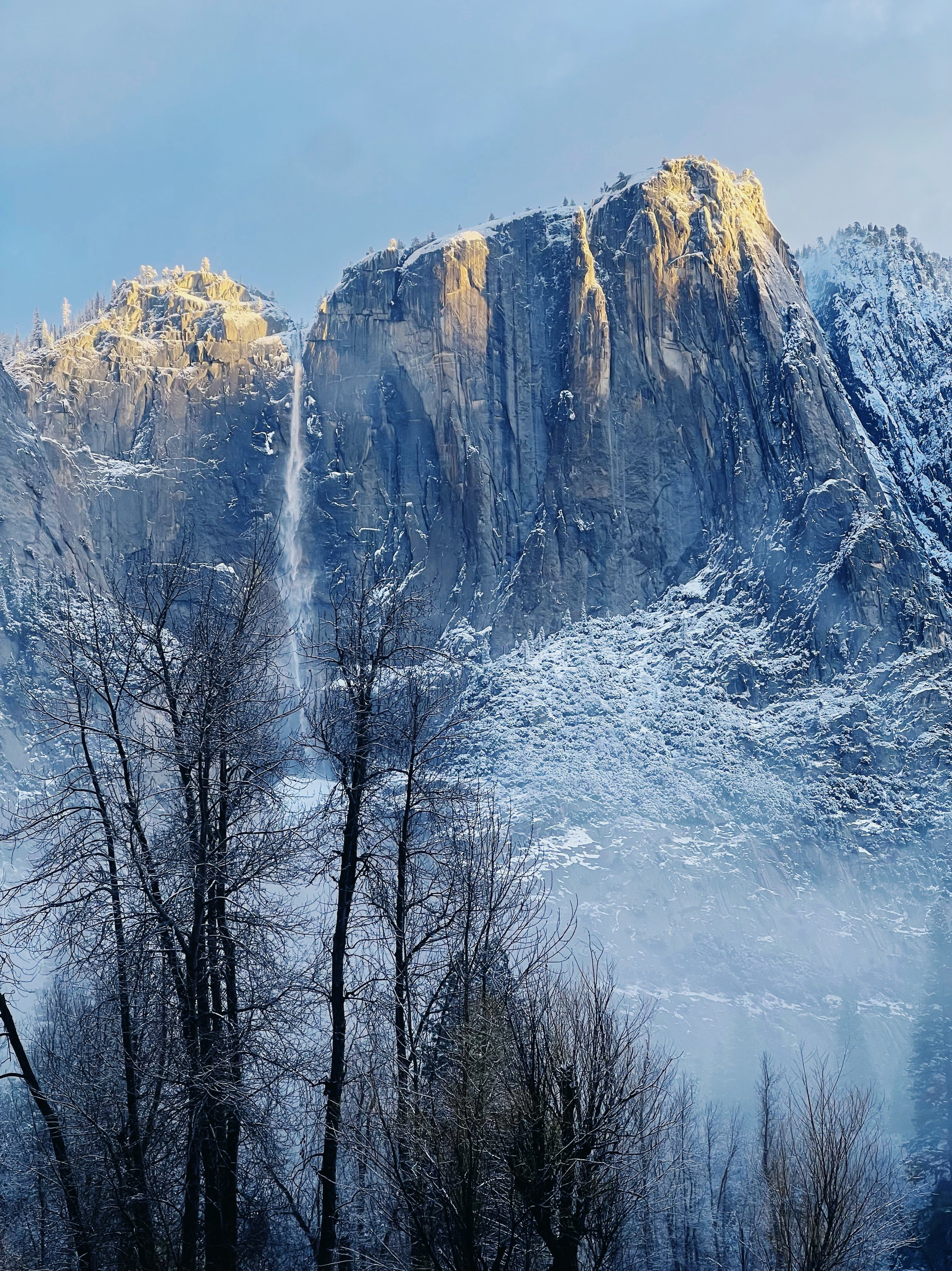Discovering Yosemite Falls
Yosemite Falls, a remarkable spectacle in the Yosemite National Park, is one of the tallest cascades in North America. This awe-inspiring waterfall, towering at 2,425 feet, boasts a three-tiered structure, comprising the Upper Yosemite Fall, the middle cascades, and Lower Yosemite Fall.
The Anatomy of Yosemite Falls
The grandeur of Yosemite Falls is a result of its three distinct sections.
Upper Yosemite Fall: This is the highest segment, plummeting a staggering 1,430 feet. The sight of the water cascading from this height is truly mesmerizing.
Middle Cascades: Often overlooked due to their inaccessible location, the middle cascades contribute 675 feet to the total height. This section comprises a series of five smaller cascades in quick succession.
Lower Yosemite Fall: The last stretch of the waterfall, though the smallest of the three with a drop of 320 feet, is still an impressive sight.
The Lifeblood of Yosemite Falls: Yosemite Creek
The breathtaking spectacle of Yosemite Falls owes its existence to the Yosemite Creek, which is primarily fed by snowmelt. The waterfall's flow varies with the seasons, peaking in late spring when it can witness a gush of up to 2,400 gallons of water per second. However, by late summer, the waterfall often dries up, making the best time to visit between April and June.
The Wonders of Winter: Ice Cone and Frazil Ice
Winter brings unique phenomena to Yosemite Falls. An ice cone, as high as a 25-story building, sometimes forms at the base of the Upper Yosemite Fall. This ice formation, reaching heights of up to 322 feet, is usually melted by mid-April.
Another fascinating winter occurrence is the formation of frazil ice. When waterfall mist becomes supercooled, it forms ice crystals that group into a spongy mass. This frazil ice sometimes overflows the creek bed, creating an enchanting winter landscape.
A Lunar Spectacle: The Moonbow
One of the most magical events at Yosemite Falls is the occurrence of a moonbow. As the full moon rises in April and May, its light is captured and refracted in the waterfall's massive spray, resulting in a stunning lunar rainbow.
Accessibility and How to Get There
Yosemite Falls is located on the north rim of Yosemite Valley. Visitors can access the base of the waterfall from Northside Drive, near the Lower Yosemite Falls shuttle stop, and across from the Yosemite Valley Lodge. A leisurely one-mile hike leads to the waterfall base.
For the more adventurous, the Upper Yosemite Fall Trail offers a strenuous 7.2-mile round-trip hike with 2,700 feet of elevation gain. This challenging trek rewards hikers with breathtaking views from the top of the waterfall.
Rules and Regulations
Visitors are reminded to respect the natural environment when visiting Yosemite Falls. Leashed pets and strollers are allowed, but bicycles are prohibited. Food should be kept within arm's reach at all times, and feeding wildlife is strictly forbidden.
Safety Considerations
It's crucial to stay on the paved trail while visiting Yosemite Falls. The rocks and boulders above the wooden footbridge crossing Yosemite Creek can be slippery even when dry. Going off-trail in this area has led to serious injuries in the past.


